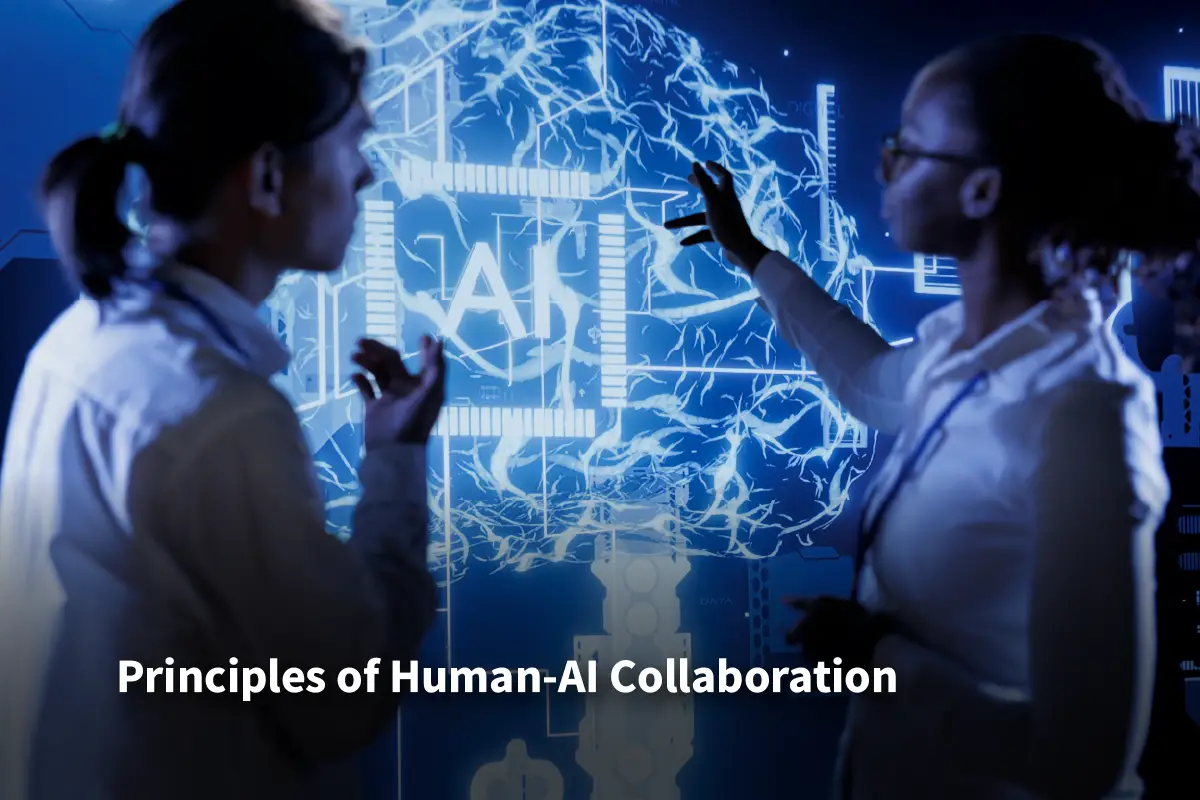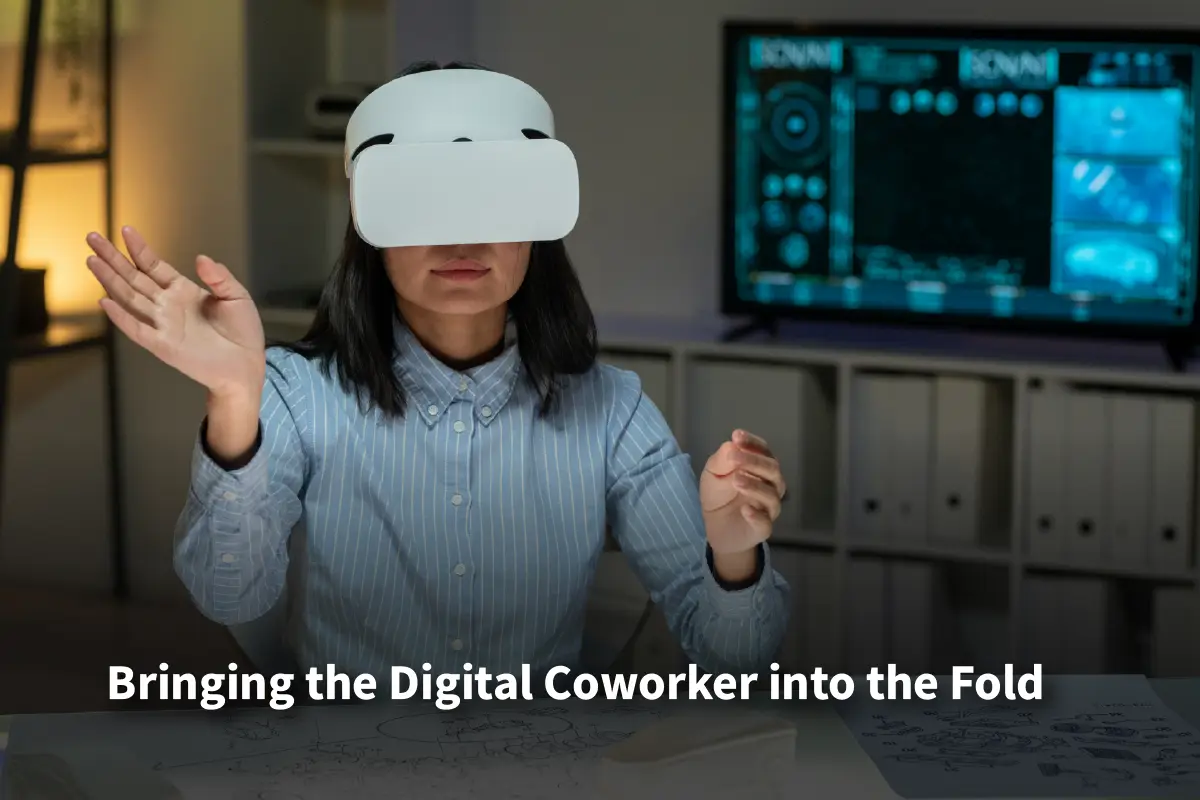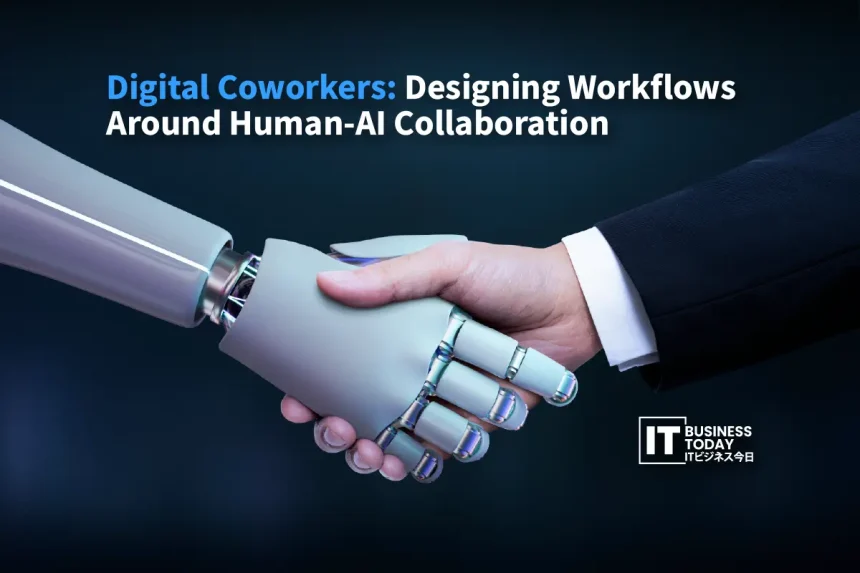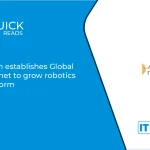The story about artificial intelligence at work often swings between two extremes. On one side, people see a bright future of easy productivity. On the other, they fear job loss and chaos. Both extremes overlook a more complex and powerful reality emerging in innovative organizations. We are not seeing machines replace humans. Instead, a new way of working is emerging: human-AI collaboration.
Focus on digital coworkers, not robots taking jobs. These advanced tools fit right into our teams. These digital entities are more than tools. They are partners that enhance human intelligence, accelerate processes, and create new strategic opportunities. According to McKinsey, redesigning workflows around AI is the most impactful strategy for capturing real enterprise value, with 21% of users already reporting such transformations. Today’s business leaders face a big challenge. It’s not just about using AI. They must also redesign workflows to tap into its collaborative power. This is where sustainable competitive advantage will be forged.
The End of the Assembly Line Mentality
Traditional workflows often look like assembly lines from the industrial era. They are carefully divided into separate, step-by-step tasks. This model works well for routine tasks. But it fails with the changing, complex needs of today’s economy. Putting AI into these strict systems just as a task-automator is a big mistake. It leads to frustration, inefficiency, and a failure to capture the true value AI offers. Picture a top strategist stuck doing data entry. That’s what occurs when we chain powerful AI to old methods. AI is great at spotting patterns, analyzing data, and getting tasks done fast. Humans are great at understanding context. They solve problems creatively, make ethical choices, and show empathy. We need to redesign workflows. This will help us unlock their full potential by using the strengths of both. This means going beyond automation to orchestration. Here, humans and AI work together as equals. In one field study, human-AI teams boosted productivity by up to 60% per worker, but only when workflows were reimagined for orchestration, not just automation.
Also Read: Quantum Biology: Japan’s Role in the Next Medical Frontier
Principles of Human-AI Collaboration

We must rethink how we work, driven by key principles.
Augment, Don’t Replace: First, prioritize augmenting human capabilities, not replacing them. Workers using AI-powered tools now complete significantly more work, such as developers delivering 126% more weekly output. We will enhance human performance with AI, not simply automate tasks. Using AI for data processing and routine tasks lets our team focus on what matters. They can understand data, make informed decisions, build connections, and drive innovation. AI can quickly analyze market trends and customer feelings from large datasets. It presents clear insights to a marketer. The marketer then creates the detailed campaign story and emotional appeal. The AI provides the foundation; the human builds the compelling structure upon it.
Define Clear Handshakes: Collaboration requires clear communication and defined roles. Explicitly map out the points of interaction between human and AI within a workflow. Where does responsibility transfer? What information must be exchanged? What constitutes a successful ‘handoff’? Think of it as defining the API (Application Programming Interface) for human-AI interaction. An AI chatbot can help in customer service. It handles initial questions, collects basic info, and solves simple problems. It hands off the chat to a human agent when it hits a certain complexity level or sees customer frustration. This agent is ready to handle the sensitive and thoughtful conversation using all the context given. The handshake is clear, smooth, and context-rich.
Embrace Dynamic Adaptation: Rigid workflows crumble in dynamic environments. Human-AI collaboration works best when the workflow can change. It should adapt to context, complexity, or real-time feedback. Allow for fluidity. An AI can create a first draft of a report. Then, a human editor improves it for clarity and strategy. Finally, the AI checks it for compliance rules and style guidelines before it’s published. The path isn’t fixed; it flexes based on the task’s needs and the collaborators’ inputs. This means creating workflows that include feedback loops. In these loops, both human and AI outputs shape the next steps.
Prioritize Explainability and Trust: For people to work well with AI, they must understand why it made a certain choice or suggestion. Opaque ‘black box’ systems breed suspicion and hinder adoption. Invest in AI solutions that provide some explainability. This lets human collaborators check the reasoning behind suggestions. Transparency is key. It builds trust. It supports oversight. It keeps AI in line with human values and business goals. A financial analyst needs to understand the key factors in an AI’s risk assessment. This knowledge is crucial before presenting it to the board. Similarly, a doctor needs to know what shapes an AI’s diagnostic suggestion.
Cultivate Human-Centric Skills: As AI handles more routine tasks, human skills become more valuable.
Workflow redesign should promote key skills. These include:
- Critical thinking: Evaluate AI outputs and spot bias.
- Complex problem-solving: Address ambiguous challenges that AI can’t handle.
- Creativity: Generate fresh ideas and strategies.
- Emotional intelligence: Manage teams and understand customer needs.
- Ethical judgment: Make sound decisions in tricky situations.
Designing workflows means creating space for these skills to flourish. A project manager can use AI to track timelines, allocate resources, and spot risks. This allows them to motivate the team, resolve conflicts, and manage tough stakeholder issues. These areas need human intuition and empathy; which AI can’t replace.
Bringing the Digital Coworker into the Fold

Transforming principles into practice requires deliberate action:
Map and Deconstruct: Begin by meticulously mapping your core value-chain workflows. Look for tasks that need a lot of data, happen often, follow strict rules, or require quick info gathering. These are great tasks for AI to help with. Also, identify tasks that need creativity, empathy, complex judgment, or deep understanding. These areas are still best handled by humans. The goal is to find ways the digital coworker can lighten the mental load. This will help free up space for human creativity.
Pilot with Precision: Avoid big-bang transformations. Select a specific, contained workflow or departmental process for a pilot project. Define clear success metrics from the start.
Do you want:
- Faster cycle times?
- Fewer errors?
- Better employee satisfaction?
- Higher-quality outputs?
- Cost savings?
A sales team could test an AI tool. This tool analyzes CRM data and call transcripts. It finds the best prospects and suggests personalized talking points. This helps sales reps focus on building stronger relationships. Measure the impact rigorously on both efficiency and human outcomes.
Invest in Change Management & Training: Adding a digital coworker greatly impacts the culture. Employees need reassurance about their changing roles. They also require training, not just on using the AI tool, but on working well with it.
Training should focus on these key areas:
- Interpreting AI outputs.
- Giving effective feedback to improve AI performance.
- Understanding AI’s limitations.
- Using the saved time for higher-value tasks.
Address fears transparently and position AI as a powerful assistant, not a replacement.
Foster a Feedback Culture: Collaboration is a two-way street. Find ways for workers to share feedback on the AI. They should comment on its performance, ease of use, and results. This feedback loop is key. It sharpens AI models, streamlines workflow design, and ensures collaboration stays productive and meets human needs. Think of the digital coworker as a team member. You can coach and improve their performance.
The Tangible Benefits
Organizations that create workflows for human-AI teamwork gain many benefits. These advantages go well beyond just saving money.
Faster Decisions and Better Quality: AI quickly analyzes large data sets. It finds patterns and trends that people might miss. When skilled human decision-makers use this synthesized intelligence, decisions get faster. With context and judgment, they become more data-driven and stronger. A supply chain manager uses AI to predict disruptions. With this insight, they reroute shipments or change inventory on the spot. This cuts decision-making time from days of manual work to mere hours.
Boosting Employee Experience and Value: Automating repetitive tasks frees up knowledge workers. They can then focus on more challenging and creative projects. This sparks engagement, satisfaction, and boosts retention. Employees appreciate being valued for their unique skills. They want recognition for what they do best, not for tasks that machines can do better. This change makes the employee experience about meaningful work. It swaps dull tasks for a sense of purpose.
Faster Innovation Cycles: AI quickly tests ideas, simulates situations, and studies market responses. This drives innovation faster than ever before. It also spots new trends. This skill, combined with human creativity and vision, speeds up innovation. Teams can test more ideas. They fail faster and cheaper. Then, they iterate towards breakthrough solutions quickly. The digital coworker is a key partner in the innovation lab. It takes care of complex calculations, so humans can focus on their creative ideas.
Sustainable Competitive Advantage: The real advantage comes from not just having AI. It’s about how well humans and AI work together. Companies that integrate this synergy into their core work develop unique strengths. The blend of human creativity and digital intelligence builds a strong, adaptable organization. This combination is the key advantage for 21st-century businesses.
Navigating the Challenges
This transformation demands vigilance:
Set Ethical Standards: We need clear guidelines for AI development. These rules should ensure fairness, stop discrimination, protect privacy, and keep human oversight. Human accountability is crucial for high-stakes decisions.
Combat Bias: AI models show the data they learn from. We must find, reduce, and watch for algorithmic bias. Diverse teams are key to building and managing AI systems. Human judgment is also crucial for spotting and fixing biased outputs.
Focus on Human Connection: In customer service and teamwork, empathy and understanding matter. Building strong relationships is key. AI should improve these interactions, like giving agents better context. However, it must not replace genuine human connection when it truly counts. Workflow design must intentionally preserve and elevate these moments.
The Future is Collaborative
The age of the digital coworker isn’t a far-off fantasy. It’s happening now in boardrooms, labs, and customer service centers around the globe. The businesses that will thrive are those whose leaders proactively embrace this shift. We need to see AI as more than just a productivity tool. It can also change how we think about work itself. We create workflows that mix human and artificial intelligence. This boosts performance, sparks innovation, and enhances human potential. This isn’t just humans versus machines. It’s about humans and machines working as partners. They can build a future of work that is more productive, fulfilling, and human. Global business leaders must act now. Design for the digital coworker today. If they don’t, they risk falling behind those who already have. The future belongs to the orchestrators of this powerful new collaboration.







